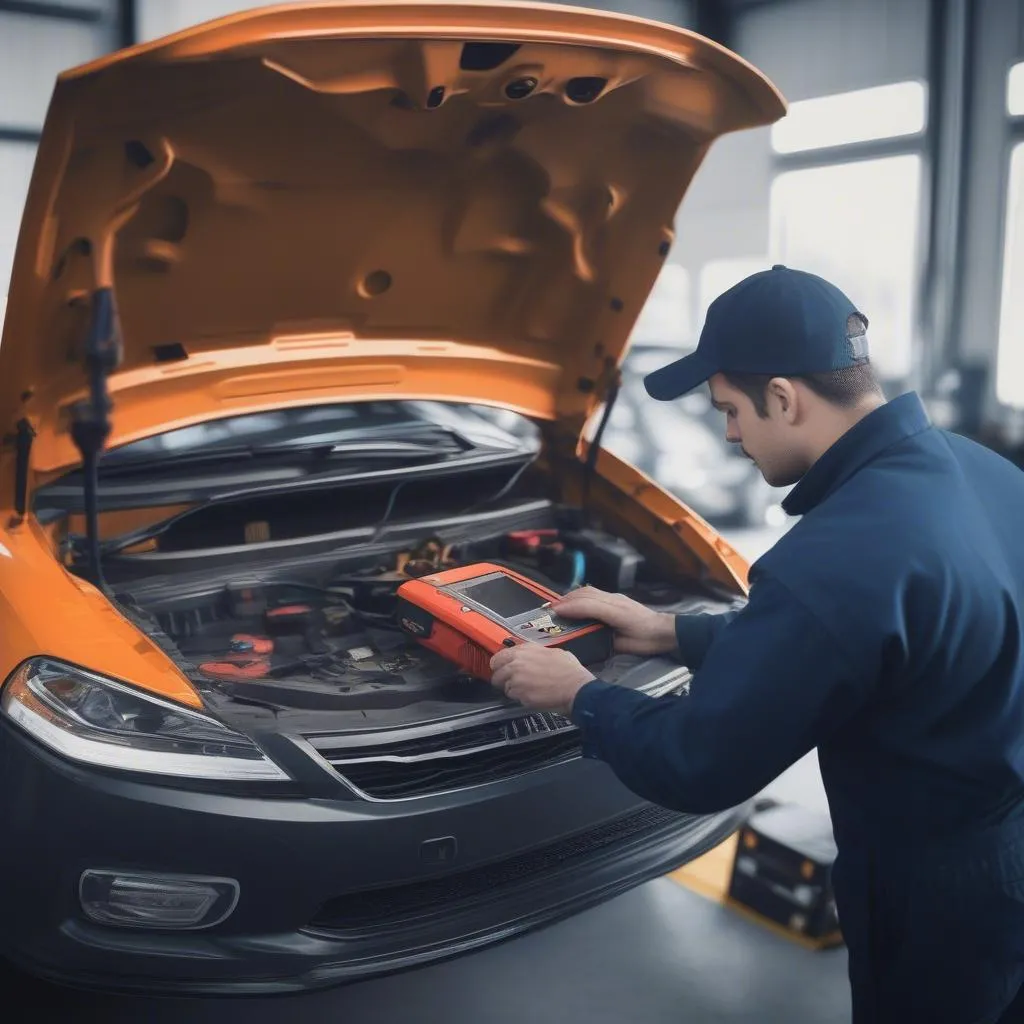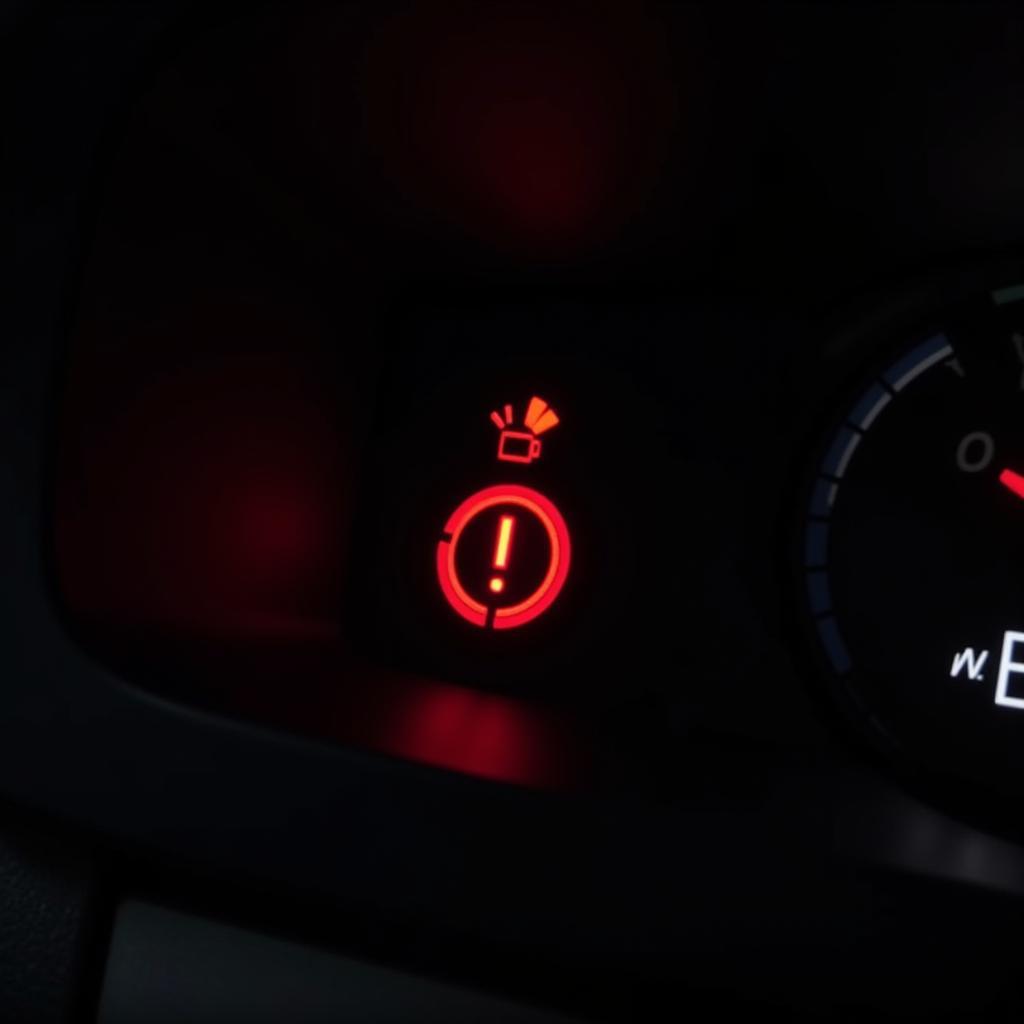The car brake warning light is one of the most important indicators on your dashboard. When illuminated, it signals a potential issue with your braking system that requires immediate attention. Ignoring this warning light can compromise your safety and lead to costly repairs. This comprehensive guide will delve into the common causes of a car brake warning light, how to diagnose the problem, and the necessary steps to rectify the situation.
Understanding Your Car’s Brake Warning System
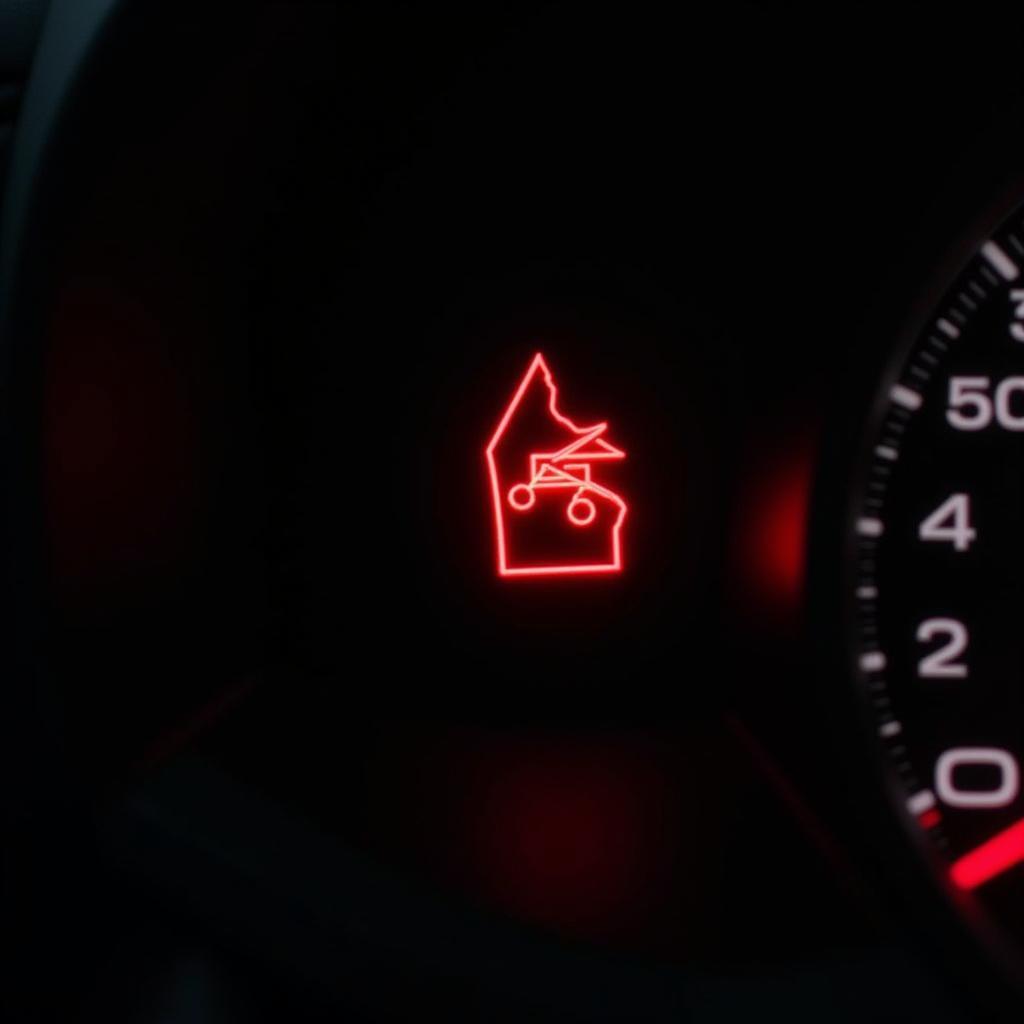 Car Dashboard with Brake Warning Light Illuminated
Car Dashboard with Brake Warning Light Illuminated
Modern vehicles are equipped with a sophisticated braking system that ensures safe and efficient deceleration. The brake warning light is an integral part of this system, designed to alert you to potential malfunctions. When you engage your parking brake or detect a problem within the hydraulic, electronic, or mechanical components of your brakes, the warning light will illuminate.
Common Causes of a Car Brake Warning Light
There are several reasons why your car brake warning light might come on. Some of the most common causes include:
-
Low Brake Fluid: Brake fluid is the lifeblood of your braking system, transmitting the force from your foot on the pedal to the brake calipers. A leak in the brake lines or a worn-out master cylinder can lead to low brake fluid levels, triggering the warning light.
-
Worn Brake Pads: Brake pads are designed to wear down over time as they generate friction to slow or stop your car. When the brake pad material reaches a certain minimum thickness, a sensor will activate the warning light, indicating the need for pad replacement.
-
Faulty ABS System: The Anti-lock Braking System (ABS) prevents your wheels from locking up during hard braking, maintaining steering control and stability. A malfunctioning ABS module, wheel speed sensor, or wiring issue can trigger the brake warning light.
-
Parking Brake Engaged: Sometimes the simplest explanation is the most likely one. If you’ve accidentally left your parking brake partially engaged, the warning light might illuminate.
-
Brake Light Switch Issue: A malfunctioning brake light switch can prevent your brake lights from engaging when you press the pedal, also triggering the brake warning light.
Diagnosing the Problem: What to Do When the Light Turns On
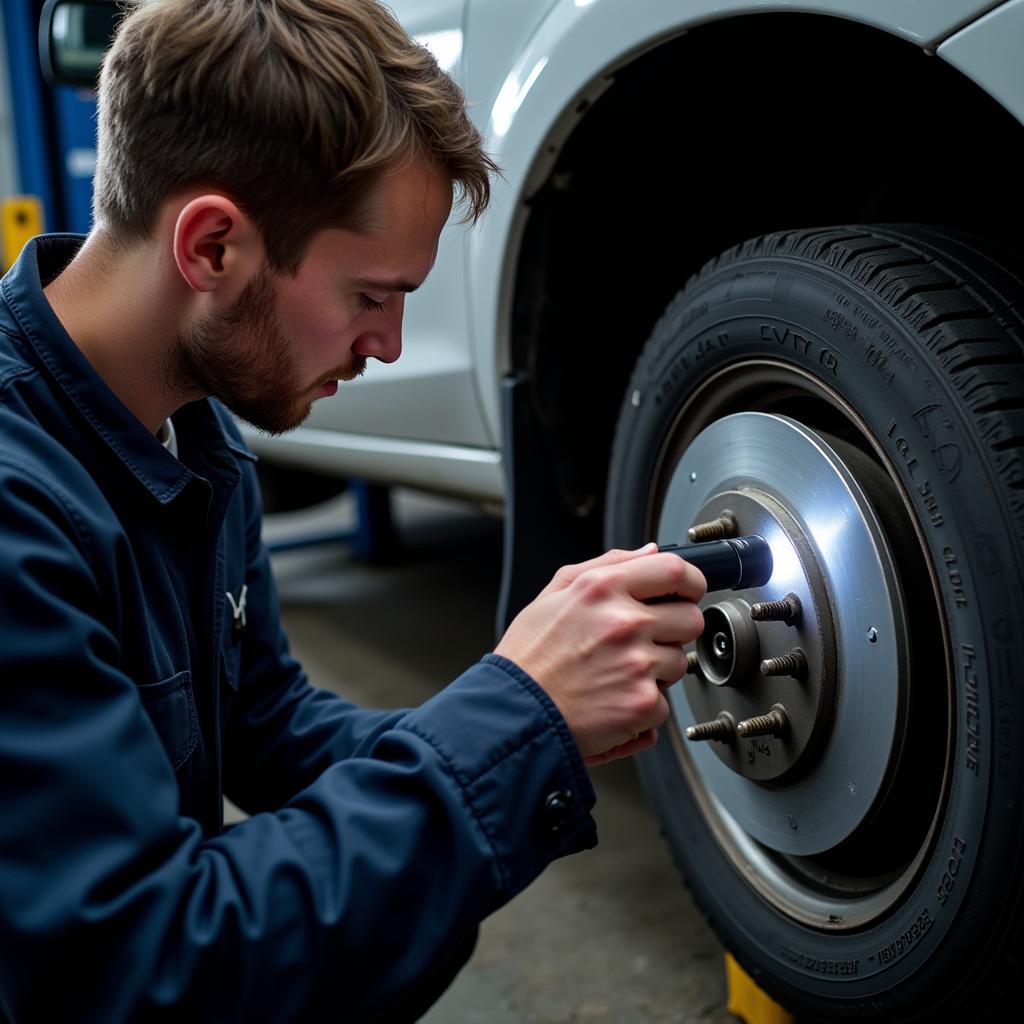 Mechanic Inspecting Brake Fluid Level in a Car
Mechanic Inspecting Brake Fluid Level in a Car
If your car brake warning light comes on, it’s crucial to address the issue promptly. Here’s a step-by-step guide to help you diagnose the problem:
-
Check Your Parking Brake: Ensure the parking brake is fully disengaged.
-
Inspect Brake Fluid Level: Park your car on a level surface and check the brake fluid level in the master cylinder reservoir. Refer to your owner’s manual for the reservoir location. If the fluid level is low, there might be a leak or your brake pads might be excessively worn.
-
Look for Visible Leaks: Inspect the area around your wheels and under the car for signs of brake fluid leaks. Brake fluid is typically clear or amber in color and has a slightly oily texture.
-
Listen for Unusual Noises: While driving at low speeds, listen for any unusual noises coming from the brakes, such as grinding, squealing, or clicking.
-
Feel for Brake Pedal Changes: Pay attention to how the brake pedal feels. Does it feel spongy, go all the way to the floor, or pulsate unusually?
-
Seek Professional Help: If you’re unable to diagnose the problem yourself or suspect a serious issue, it’s crucial to take your car to a qualified mechanic immediately.
Solutions and Repairs: Getting Your Brakes Back in Top Shape
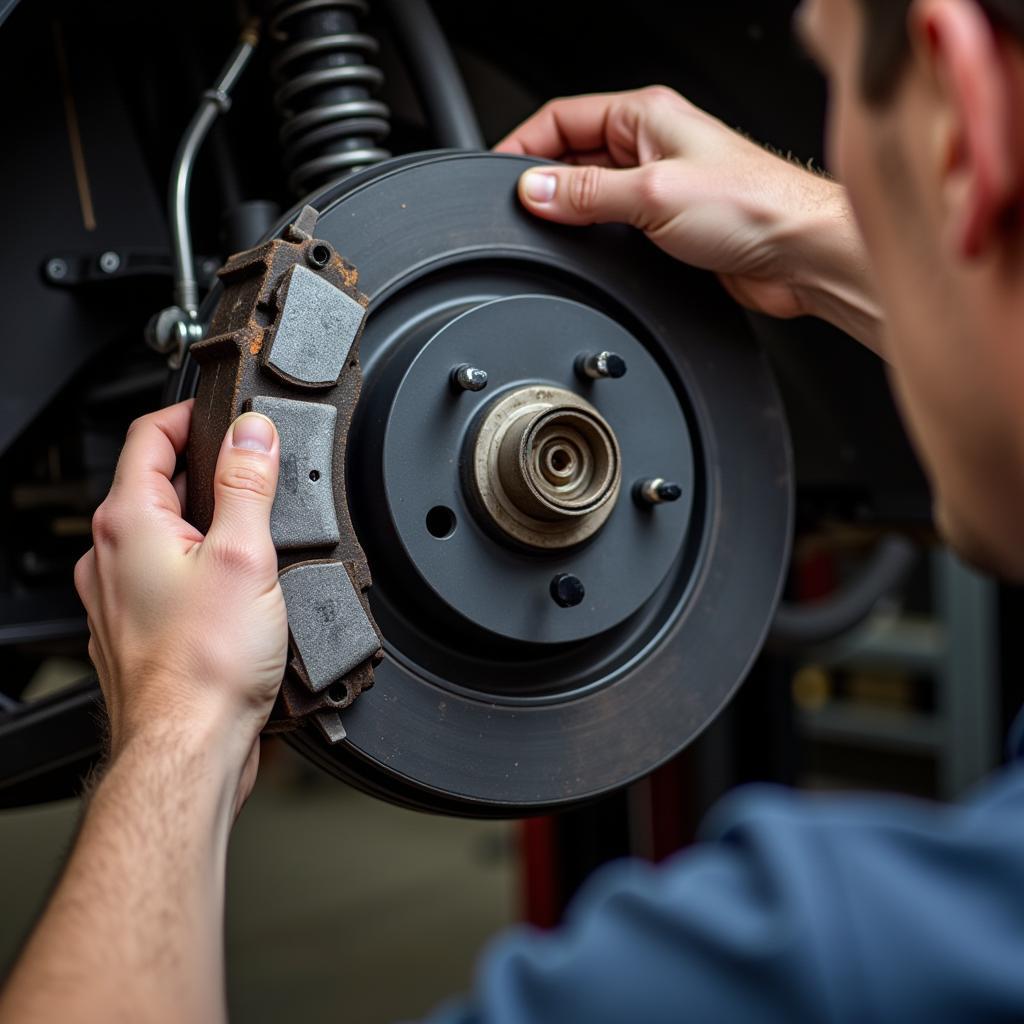 Car Brake Pad Replacement
Car Brake Pad Replacement
Depending on the diagnosis, the solution to your brake warning light issue can range from a simple fix to a more complex repair. Here are some potential fixes:
-
Adding Brake Fluid: If the brake fluid level is low and no leaks are detected, carefully top it off with the correct type of brake fluid specified in your owner’s manual. However, it’s crucial to identify and address the underlying cause of low fluid levels.
-
Replacing Brake Pads and Rotors: Worn brake pads need to be replaced to ensure optimal braking performance and prevent damage to the rotors. If the rotors are excessively worn or damaged, they may also require resurfacing or replacement.
-
Repairing or Replacing Brake Components: Leaks in brake lines, hoses, or the master cylinder require immediate repair or replacement by a qualified mechanic.
-
Addressing ABS System Issues: Diagnosing and repairing ABS system faults often require specialized tools and expertise. Seek professional assistance from a qualified mechanic or dealership.
Brake Warning Light: Don’t Ignore the Signs
A car brake warning light is a serious safety concern that should never be ignored. Timely diagnosis and repair can prevent accidents and ensure your safety on the road. If you’re experiencing issues with your car’s braking system, consult a qualified mechanic immediately.
FAQs: Frequently Asked Questions about Car Brake Warning Lights
1. Can I drive my car with the brake warning light on?
It’s highly discouraged to drive with the brake warning light on. Driving with a compromised braking system puts you and others at risk. Seek immediate professional assistance.
2. How much does it cost to fix a car brake warning light issue?
The repair cost varies depending on the underlying cause. Simple fixes like adding brake fluid or replacing brake pads are relatively inexpensive, while addressing ABS issues or major component replacements can be more costly.
3. How often should I check my brake fluid?
It’s a good practice to inspect your brake fluid level at least once a month and whenever you’re checking your other fluids like oil and coolant.
4. What happens if I run out of brake fluid?
Running out of brake fluid is extremely dangerous as it can lead to complete brake failure. If this happens, gradually apply the parking brake while looking for a safe place to stop.
5. Can a faulty sensor trigger the brake warning light?
Yes, a faulty brake pad wear sensor or ABS sensor can trigger the brake warning light even if there’s no actual problem with the braking system. However, it’s crucial to have the system inspected to rule out any potential issues.


